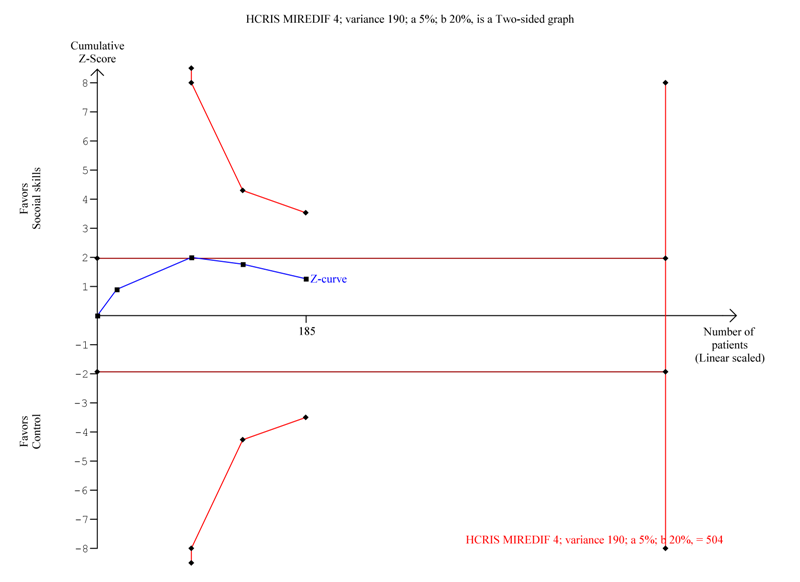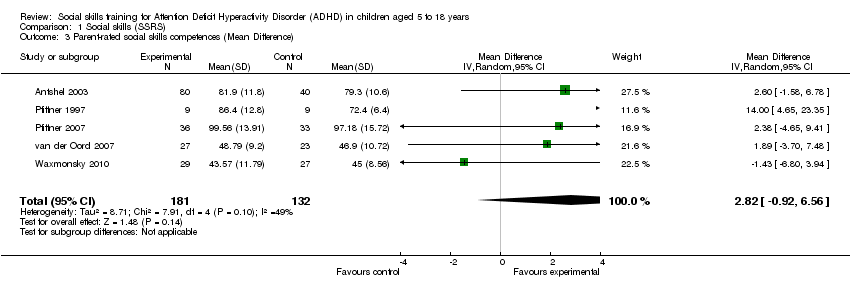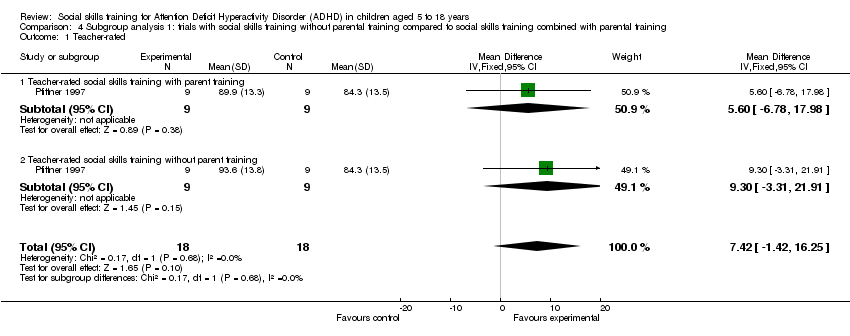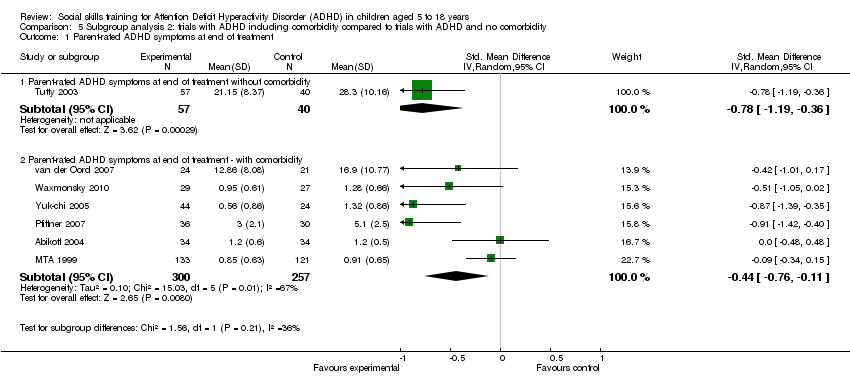Contenido relacionado
Revisiones y protocolos relacionados
Ole Jakob Storebø, Mette Elmose Andersen, Maria Skoog, Signe Joost Hansen, Erik Simonsen, Nadia Pedersen, Britta Tendal, Henriette E. Callesen, Erlend Faltinsen, Christian Gluud | 21 junio 2019
Morris Zwi, Hannah Jones, Camilla Thorgaard, Ann York, Jane A Dennis | 7 diciembre 2011
Anfetaminas para el trastorno de déficit de atención e hiperactividad (TDAH) en niños y adolescentes
Salima Punja, Larissa Shamseer, Lisa Hartling, Liana Urichuk, Ben Vandermeer, Jane Nikles, Sunita Vohra | 4 febrero 2016
Gretchen J Bjornstad, Paul Montgomery | 20 abril 2005
Pablo Luis Lopez, Fernando Manuel Torrente, Agustín Ciapponi, Alicia Graciela Lischinsky, Marcelo Cetkovich‐Bakmas, Juan Ignacio Rojas, Marina Romano, Facundo F Manes | 23 marzo 2018
Metilfenidato para niños y adolescentes con trastorno de déficit de atención e hiperactividad (TDAH)
Ole Jakob Storebø, Maja Rosenberg Overby Storm, Johanne Pereira Ribeiro, Maria Skoog, Camilla Groth, Henriette E Callesen, Julie Perrine Schaug, Pernille Darling Rasmussen, Christel-Mie L Huus, Morris Zwi, Richard Kirubakaran, Erik Simonsen, Christian Gluud | 27 marzo 2023
Shasha Li, Bo Yu, Dong Zhou, Chengqi He, Lin Kang, Xiaotong Wang, Songhe Jiang, Xiang Chen | 13 abril 2011
Brian Reichow, Amanda M Steiner, Fred Volkmar | 11 julio 2012
Jik H Loy, Sally N Merry, Sarah E Hetrick, Karolina Stasiak | 9 agosto 2017
Xavier Castells, Lídia Blanco‐Silvente, Ruth Cunill | 9 agosto 2018



















